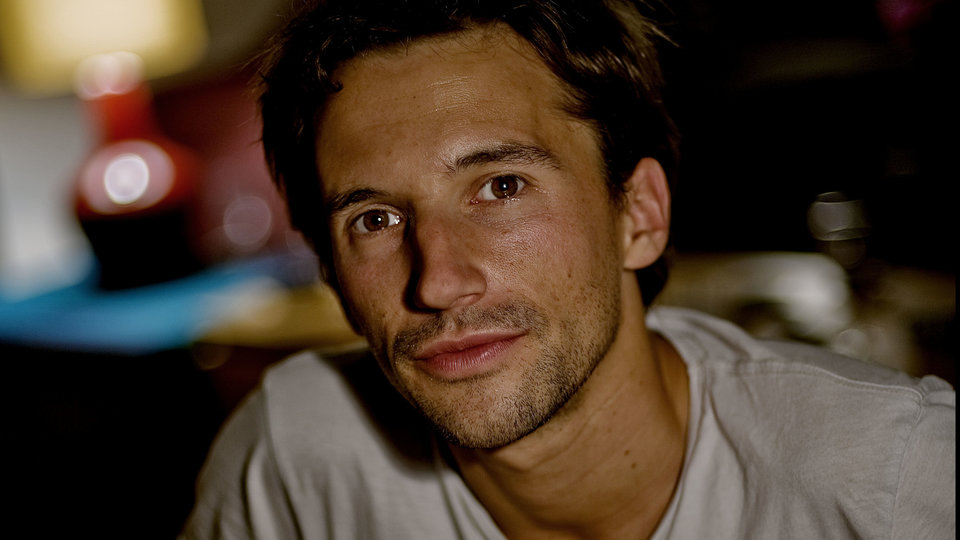The Oasis documentary Supersonic has proved to be a phenomenal hit around the world. Director Mat Whitecross has delivered a definitive look at the most important years of Oasis’ life, from the creation of the band right through to their iconic Knebworth gigs 20 years ago.
Mat Whitecross is a director and editor, known for The Road to Guantanamo (2006), Sex & Drugs & Rock & Roll (2010), Ashes (2012) and Spike Island (2012). He’s directed memorable music videos for various artists too like Coldplay (including that fantastic video for Paradise), The Rolling Stones, Take That and Jay-Z.
We chatted to Mat to discuss all things Oasis, how he approached the massive task of bringing their iconic story to the big screen and if we’ll ever get to see a sequel to Supersonic.
Check out our 5 star review of Supersonic
First off, congratulations on the success of Supersonic. It’s gained fan and critical praise across the board. How does it feel?
Thanks so much – the response has been overwhelming. You always make films like this in a bit of a bubble, just a small team of friends putting something together – so you never know how people will react.
We wanted to make a film for everyone – something fans would love but that might also win over sceptics or a new generation of kids who were unfamiliar with the music and the story. The reaction’s been more than I could ever have hoped for. I know that’s down to the love people have for the band, but I’m glad people have also taken the film to their hearts.
How had the music of Oasis affected your life prior to making the documentary?
I was a huge fan growing up – I had the albums, the singles, the posters on my walls. It was impossible to grow up in the ‘90s and for them not to be part of your life – whether you liked it or not, their music and their personalities were part of the zeitgeist. But I don’t have an Oasis tattoo on my arse or anything – the level of devotion fans have for this band is off the scale! Then through the years, the music scene moved onto the next thing, and after the band’s split in 2009, it felt people might need a bit of a reminder of how special that band were.
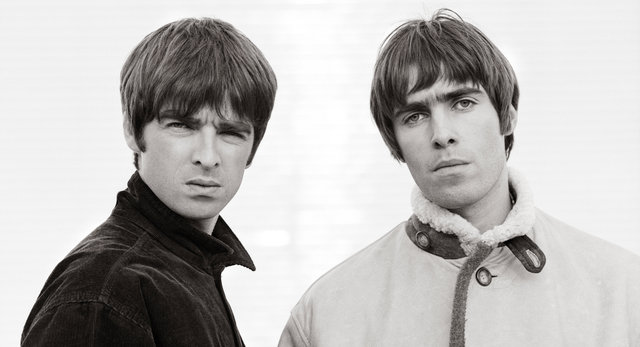
How did you first get involved with the project?
I met one of the producers Simon Halfon a few years ago, and we’d talked about doing a Clash project. The timing didn’t work out for different reasons, but we always said we’d find something else to do together. Then out of the blue, a couple of years ago, he dropped me a line asking if I was an Oasis fan. In a former life, Simon had designed the sleeves for the later Oasis albums, and had had a close relationship with them for a long time.
And at that point, I didn’t know what he had in mind – maybe the band were getting back together! But he said he wanted to set up a meeting with Noel and his managers at Ignition to talk about making a retrospective documentary. In that first session, we talked about what the film could be. I didn’t think it would be possible to do the band’s whole story justice in two hours. So we talked about the Knebworth anniversary coming up in a year’s time – and decided that might be a good way to start and end the film.
Given the tensions between Liam and Noel, how did that affect the way you approached the project? Were there any concessions that you had to make (in terms of the vision you initially had for an Oasis documentary)?
Well once I’d met Noel, the next question was whether Liam would be up for being part of the project, given their on-going problems. But it was a real relief meeting Liam – he was incredibly gracious and trusting of what we were trying to achieve.
There was never any question of us interviewing them together. That pushed us in the direction of doing audio interviews instead – so we could create a conversation between the brothers that would be impossible in real life. And actually I think in many ways it worked out better for us – I don’t think we would ever have managed to get the level of depth we needed with Liam and Noel together.
How hard was it to track down some of the behind the scenes footage – from the early gigs, Japan etc?
Because the band had given us their blessing, a lot of people felt it was finally the time to dig under their beds or in their attics for those tapes that they’d shot many years before. So some of it came to us through friends and collaborators. A lot we had to go digging for ourselves. For whatever reason, even though we were dealing with the pre-digital, pre-mobile phone era, many key moments in the band’s history had been captured – purely by chance. Moments like the notorious Whisky A Go Go gig, the first tour of Japan, and the appearance at King Tuts where Alan McGee met them. But the real challenge was filling in the inevitable black holes – Noel’s first disappearance in the US, or the Amsterdam ferry sequence.
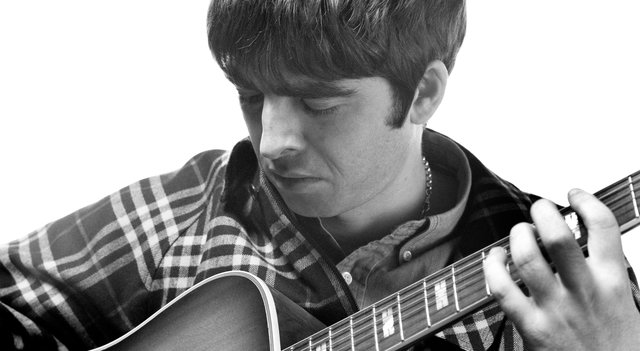
Supersonic’s biggest success comes from its raw honesty. Were Liam and Noel quite happy to discuss all aspects of that time-period?
Yes they were incredibly open. I had hoped they would be, given their reputation for honesty, but you never know. There was no area that was off limits. When we were dealing with difficult moments in their lives, sometimes we’d revisit them in another interview if I felt we hadn’t got what we needed first time round. But they were very patient and never complained even when I wanted to keep coming back to certain incidents. They seemed to enjoy the process.
Were there any revelations throughout the course of making Supersonic that you found particularly revelatory or memorable?
There were a lot of incidents that came up in the interviews that I hadn’t heard before – Liam being smacked on the head with a hammer as a kid or Noel having a severe panic attack in Detroit on tour – not all of which made it into the film. But I think what we were mainly trying to do was get deeper into some of the more familiar moments. The brothers had given us more time than they’d ever given anyone before, so we really had the opportunity to hear a lot of stories properly for the first time.
For me personally, Knebworth was the greatest gig I’ll ever go to. It was the absolute perfect storm. Do you think they’ll ever release the full gig, either as a DVD or an official live recording?
I hope so – it’s beautifully shot by Dick Carruthers’ team. I particularly love their use of Super 8 – it has a poetic, dreamlike quality, which worked perfectly for what we were trying to make Knebworth represent in the film. And like you say, the gig was immense. The film crew did a lot of interviews with fans as they were waiting for the band to come on stage – many of which were in the film at one point. I think people would love to see that now. And there were a lot of great high energy songs which we didn’t get a chance to use in the film – but the spectacle of a sea of 125 thousand people all pogoing in a field is unreal.
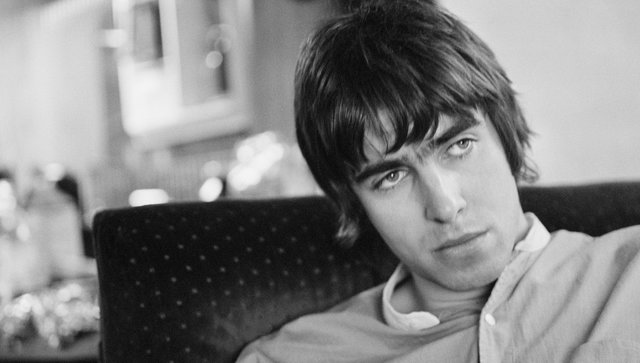
One of the many things I loved in Supersonic was the opportunity you gave for their music to do the talking in key scenes. Was that a tricky balancing act, especially given how many anthems you could use? And what’s your personal favourite Oasis track?
It was one of the hardest things for us, choosing the music for the film. We decided early on that it wasn’t enough for a song to be great, it had to tell a story. So some of my favourite tunes came and went – we’d had a whole sequence of the stage invasion in Newcastle set to Bring It On Down, and the aftermath played out to an instrumental version of Liam’s song I’m Outta Time. But in the end, the film was just too long – the assembly was around 8 hours!
There was a long sequence on Blur v Oasis which was soundtracked by outtakes from Roll With It, and I was always trying to find space for Half the World Away. We also had a whole sequence on Noel travelling to Mustique with Johnny Depp & Kate Moss, and recording the Be Here Now demos with Owen Morris. But like you say, you want the music to breathe too, and there’s only so much you can squeeze into two hours. I’m sure Oasis fans will be surprised with what we had to leave out as much as what we kept in.
There was even a stage where we hadn’t used Wonderwall or Don’t Look Back in Anger in the film – simply because we couldn’t find the right moment to showcase them. The producers were going spare! We tried out DLBIA over the end credits, but I’d always wanted to use Masterplan there. It’s the greatest end credits song of all time! Luckily we finally found a way of making those huge tunes fit our story.
As for favourites, they change all the time. I’ve always loved The Masterplan and Acquiesce.
How did you decide on the visual style of Supersonic, when animation etc is used to convey certain moments.
We struggled with this for a while – we knew there were would be gaps in the film where we had great audio interviews but no visuals. I work with Marc Knapton and his VFX team the Brewery on all my films and videos, and he came into the office and was looking around at all the mess created by our research and thought maybe if they replicated a top shot of that, we could find our way into the animation through the set lists and contact sheets. It needed to feel in keeping with the rest of the film, but have enough mischief and energy to convey the stories.
Do you have a favourite moment in Supersonic?
I think I knew as soon as I saw Tim Abbot’s ‘tin of beans’ Top of the Pops footage that that would be my favourite piece of archive forever. For me, it just says everything about the relationship between Liam & Noel at that point. I also loved putting together the Talk Tonight sequence – we did that early on, and it felt like we were getting somewhere in discovering the tone of the film.
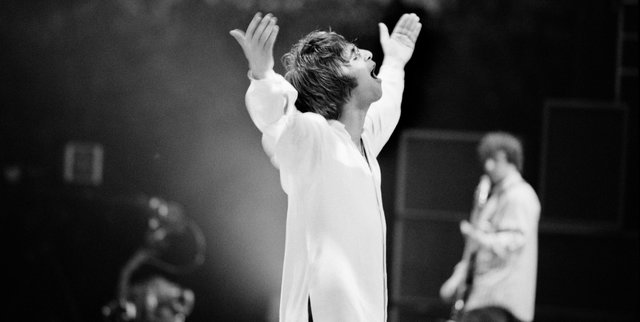
Why do you think Oasis are still such an important band, not only in terms of British music but as a cultural icon of rock and roll?
There’s so many things that created this phenomenon. I suppose that’s what we explore ultimately in the film. It’s the music, of course. Those tunes have never been beaten as far as I’m concerned. But without Liam’s charisma and attitude, they wouldn’t be Oasis. It’s the alchemy of his relationship with Noel up on stage that’s so mesmerising. There’s something mysterious in the relationship between brothers that outsiders find fascinating.
And they timed it perfectly. As Noel speculates at the end of Supersonic – could it happen again? Emerging where and when they did, there was just something in the air. People felt, culturally, politically, socially, that things were changing for the better, and Oasis’ tunes were the embodiment of that. They were a reaction to and synthesis of the grunge and dance music scenes that had preceded them. They had the punk energy of grunge without its nihilism, and the euphoria and hope of dance music without its emptiness. And they landed at a moment where people wanted to hear that, and were lucky enough to be seen by a mad visionary like Alan McGee, who grasped their potential.
As to why they’re still important, Noel & Liam often talk about how beige and corporate the music industry has become. It feels like the punk energy and mischief, not to mention those tunes, are missing now. I’m sure every generation feels this way to an extent, but I think we could all do with a bit of that spirit in our lives, particularly right now.
Liam has said that this is only the first part. The next phase – leading to the band split – is just as entertaining. Would you or are you considering a sequel covering the post-Knebworth era?
I’d be up for it if they are. There was a purity to looking at those early years – what they achieved in that short period from being signed to playing Knebworth has arguably never been equalled. The story gets pretty messy from then on – and people come and go. But it’s fascinating all the same. Let’s see…
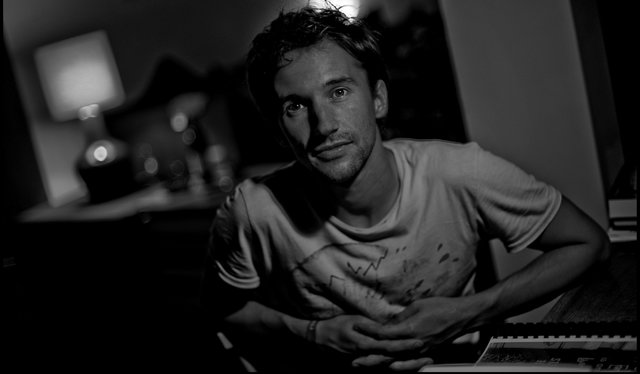
What’s next for you? Can you tell us about your upcoming projects?
I’m away filming with Coldplay for a few dates – we’re off to India and Australia in a couple of weeks. We haven’t exactly decided what the end result will be, but the great thing about working with friends is we don’t have to decide overnight. And those shows are mindblowing.
And then we’re putting together a drama about the life of Beatles manager Brian Epstein. I’m so excited about this one – I think we could make something really beautiful. Brian was a pioneer and visionary. He took a punt on the Beatles like McGee did with Oasis. Actually there are other similarities – McGee and Epstein both had a lot of demons, and tried to subdue them with drugs. I think Brian led a tragic life ultimately but what he accomplished was unprecedented and unparalleled.
And then I’ve got various other projects I’m working on with my producer Fiona Neilson. We have a company called Mint Pictures which is developing so many things – you have to have at least 10 plates spinning because you never know what’s going to come together.
Finally, what’s the one thing you’ve taken away from the Supersonic experience that means the most to you?
Meeting and spending time with Liam, Noel and all their friends, family and collaborators was something I never in a million years could have imagined I’d have the privilege of doing. They say never meet your heroes, but they’re wrong! The brothers’ generosity in sharing their memories with us is something I’ll never forget.
[brid video=”66663″ player=”531″ title=”SUPERSONIC OFFICIAL OASIS DOCUMENTARY FILM TRAILER HD”]
Supersonic is out now on Blu-ray, DVD & Digital.


